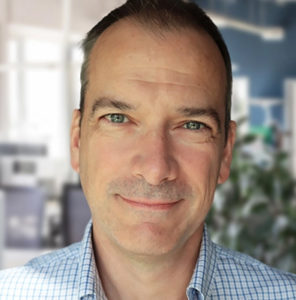 My guest for this episode is an organizational development expert, strategic advisor, executive coach, facilitator, and author Paul Thallner. Featured today as well is his book entitled Reinventing Resilience: How Organizations Move Beyond Setbacks to Grow Through Challenges.
My guest for this episode is an organizational development expert, strategic advisor, executive coach, facilitator, and author Paul Thallner. Featured today as well is his book entitled Reinventing Resilience: How Organizations Move Beyond Setbacks to Grow Through Challenges.
Paul has extensive experience working with executive teams to identify and implement strategic change initiatives and has led major culture integrations, transformations, and workplace analysis projects. Currently, he is a Principal at Daggerwing Group, a global organizational change consultancy whose Fortune 500 clients hire the firm to “do change right the first time.”
With all his skills and expertise, Paul also has came up with a book entitled Reinventing Resilience: How Organizations Move Beyond Setbacks to Grow Through Challenges. The book speaks to team leaders, managers, and executives in the corporate, nonprofit, or government sectors who want rethink resilience in order to create stronger organizations. It provides a deep dive into a new resilience model with step-by-step guidance for organizations to build resilience, create great work cultures, and become magnetic employers of choice for all.
If you’re interested and want to learn more, you may click here to visit the book website and/or Paul’s company website.
I hope you enjoy my engaging interview with Paul Thallner. Happy listening!
You may also refer to the transcripts below for the full transciption (not edited) of the interview.
Greg Voisen
Well, welcome back to Inside Personal Growth. We have joining us from give me the city call Philadelphia, Philadelphia, PA, and Paul Thallner. And he has a brand new book out called Reinventing Resilience and we get it right there. And the subtitle is How Organizations Move Beyond Setback to Grow through Challenges. I think where you're going to learn just as much as the book is by going to his website, reinventingresilience.com, I highly recommend there, you're going to find his blog, him talking about the framework of this book, his ability to speak his bio, and many other things that I think you'll find benefit. So again, it's reinventingresilience.com. And I'm gonna let the listeners know a tad bit about you. Paul is the author of this book. He's the principal at Daggerwing group, a global organization, change consultancy firm, hired by Fortune 500 clients to do change the right first time. Paul Thallner began his career, mobilizing change at scale and public education sector. He has extensive experience working with executive teams to identify and implement strategic change initiatives. toddler has also led major cultural integration transformation and workplace analysis projects. Partner at great place at work and his own consultancy high peaks group. Again, here is the book. And we're going to be talking with him today about this book. And, you know, Paul, thanks for being on because there's such a challenge today in the workplace. I mean, you give some statistics in the book, which are just almost frightening when you think about it. I'm one of them. The you said that this professor at Stanford, Jeff D. Jeffrey, Pfeiffer Pfeffer, yeah, yeah, the workplace stress is the fifth leading cause of death in the US. I just think that's just like, crazy when you go to farming. Yeah, it's alarming it is some of the statistics you give in the book are quite alarming. And so that's a reason for my listeners right now. And you're listening. Definitely take a strong listen to this. If you're running an organization, you've got employees, and they're having a hard time coping. Paul has ways to help you through that. So you start the introduction of the book with a story of you hiking the Grand Canyon, talk about coping, when you find yourself frozen in a panic attack, believe me, I used to get panic attacks regularly myself, so I know how debilitating they can be. To the point where the guy had to kind of take your hand and help you down and say, Paul, it's gonna be alright, you're gonna get through this. Can you convey the story to listeners? And what does this has to do with resilience?
Paul Thallner
Yeah, sure. Yeah, I'm forever indebted to Adam, my guide. So this was 2017. And I was a couple of days into a weeklong hike in the Grand Canyon, it was part of a leadership development program that I was participating in. And at that time, I was still thinking about my brother in law, who had recently died in a paragliding accident. So I was, my mind was very heavy, with thoughts of how unfair and capricious the world was. And it was really just kind of, to say I was not in a great place would be a bit of an understatement. But at the moment of the panic attack, what was going on is I was walking along this very narrow trail, and to my left was 600 foot drop off, like just inches off the trail. And suddenly, it struck me that even though I was in this vast, beautiful, gorgeous landscape, that it suddenly turned really grim in my head about like, actually, this landscape is terrifying and scary and doesn't care whether I fall into this hole or not, it really doesn't, you know, it was overwhelming, to say the least. So what happened, you know, long story short, is that I did not only survive, uh, Adam, my God did help me shuffle through the path and make it through. But I actually grew and evolved as a result of that experience. And later, I made the connection that many businesses are like hikers on this path, too. They get stuck sometimes. And they have to find their way. Find a way not only to survive those challenges but grow and thrive because of them.
Greg Voisen
Yeah, it is. It was a great analogy, actually, the great way to open a book up especially, I've been to the Grand Canyon. And I've been maybe to that same spot. You know, where you're kind of going down the canyon and you're looking off to the side and you're going man this a long way down. Fortunately for, for me, I don't have fear of heights. But other things used to be debilitating as I said to you and I, and I did have a long period about a panic attacks. And I ended up getting biofeedback to actually get that corrected in it. And it worked. Because I can actually see what my brainwaves are doing. But it is interesting for people in the workplace, if you were to put them on these machines that actually look at the brainwaves, you would see probably the amounts of stress that they're under. And you state that resilience is the courage and confidence to grow through challenges. And you speak with us about the internal and external environments that make up this resilience model that you've developed. Sure, yeah.
Paul Thallner
So my hypothesis for the book really was that you know that the great advice we hear for people to build their individual resilience also applies at scale to organizations. So I thought, well, you know, we're getting lots of information out there in the world, especially during COVID, about how to build our own individual resilience, but who's talking about resilient organizations. So I wanted to figure that out. And what I discovered was resilience does scale to the team and organization and to even the country level. So what makes people resilient individual people resilient is their, you know, an awareness of all of the internal and external forces that are impacting them, and, but also the belief that those factors won't stop them. organizations do the same thing. They take an action based on internal aspects like past experience, or resources, talent or intellectual property, things like that. And they also take action based on the external factors that are impacting them, like competition, market dynamics, emerging technology, and so forth. But what makes organizations resilient is that they don't automatically look at all those forces as potentially defeating, they actually believe that they can thrive, despite those challenges.
Greg Voisen
Yeah, it is interesting how, you know, you have these factors that make this up. And, you know, I said a second ago, you know, can this professor be right, that it's the leading cause of death, that the workplace stress, you know, again, resilience is the ability to learn how to cope with that, but that the status quo within an organization is not. It's not sustainable for healthy workplaces, you can't just keep going status quo status quo. What recommendations do you have for upper level management executives, and people in the organization that are dealing with this that are listening to the podcast to change what is called, this call it the disease in the workplace? Because it is really, it's an uneasiness that people have trying to learn how to cope with it, because they're given either so much work to do, or in too little time to get it done. So when you look at the constraining factors that actually make up this stress, there's external and internal factors plus they're having to deal with their own crap at home. That's right. No, it's not just what's going on at work. It's everything, that pandemic really exacerbated it, because now they were dealing with it at home at home at home, because that's where they're working from.
Paul Thallner
No doubt. Yeah, I mean, 100%, right. So I think, regardless of, I mean, Jeffrey Pfeffer statistic is very alarming. And you know, even if it's half true, it's still alarming, right? It's incredible that workplace stress rates among the most, you know, toxic things that we can do to people yet we go to work every day, we've continued to create businesses and companies that sort of contribute to this workplace stress. And we know that workers are just tired, right? There's tired, they're stressed out. And there are, you know, you know, it's so strongly part of our workplace kind of paradigm, that even the World Health Organization, cites workplace stress as a global epidemic, costing billions of dollars in GE GDP in countries all over the place. So also, I make a point in my book, that it's really not a new problem. workplace stress is something that even in the 1800s people were thinking about, you know, but the, the thing to remember is that it can be solved, right? So there's a famous quote by an organizational development legend, recent legendary researcher named Ed Deming, who said, organizations are perfectly designed to get the results they're getting right now. So if you want different results, you need to do a different organizational design. So right now, for example, a dagger one group where I work, you know, we work with executives in this area to help them to be super intentional about how they design their workplaces and their workplace cultures. So that they, that they're just as intentional about that as they are about their products and services. And, you know, so evaluating your org design, and to figure out how it's contributing to workplace stress, which then of course, cascades down to workplace or, you know, lost revenue, productivity and things like that, that's a critical first step is, is really just understanding where the organization, or how the organization is designed to create the kind of stress we want to eliminate?
Greg Voisen
Well, and I think what people forget is our health care costs, you know, the cost of actually dealing with stress, through psychological visits, medications, that people may be taking, to learn to cope, is extremely expensive. And we've actually seen, those numbers go up dramatically, with all these health care providers. And now they're all trying to find ways to help people through apps and other ways so that it can be much more cost effective. But what we find is probably one of the best things that can help for that, as you know, is our own practices and community being in a community because loneliness, I think, what the pandemic did really quite an exacerbated it. Was this world of kind of loneliness, no, look at us all, we all now can get on a zoom call, and you can be across the other end of the world. But that doesn't mean we're making a connection. And you know, you worked with Olivia Rowan. She's a publisher of ski area management magazine, and you cite lots of your clients stories in here. And I really appreciate that because it kind of shows people what's going on and you start a discussion about the feelings of ohm are overwhelmed with people are feeling. And you start an online course, for that industry. Right? What do you learn from your survey? Because you surveyed 1100 people on LinkedIn as well. And what did you learn by setting up this course for the scary management magazine?
Paul Thallner
Yeah, the course was really important. And it actually emerged out of this industry wide dialogue that we started, as you know, in the pandemic, so what was happening was, you know, how, as individuals, we were facing this existential threat, right, so we've got this pandemic, you know, we're working from home, what's really going to happen, you know, there's no future is not guaranteed, that happened at scale in the ski industry. Because if you remember, all the shutdowns started happening right at the beginning of the 2020 ski season, and all of these operators needed to figure out what to do, and they didn't, and what the smart, smartest thing they ever did was like, not assume they could solve it alone. So we brought together all of the industry, general managers from scarers, around the country, you know, hundreds and hundreds of them. But we also opened it up to anyone who worked at those organizations who wanted to listen in. And the result was a couple of learnings. One is that it is certainly possible to bring an entire industry together to reflect on what needs to happen and how to weather a storm, you know, so to speak. But it's also the other lesson is that when that does happen, powerful things emerge, right? So like an online course, where everybody committed to developing their own team and organizational resilience at scale, they, you know, whereas a lot of times, organizational culture was sort of an afterthought in that industry. But it, it kind of flattened out the hierarchy of the industry, so that everybody had a seat at the table, everybody had a voice, everybody could see their leaders, as vulnerable human beings who are thinking about this stuff and worried about this stuff on their behalf. And I think it was a galvanizing moment for the industry, for leaders to really express their confidence in the future, and also their worries and their fears going forward. So I think many resorts, were able to keep a lot of their seasonal workers as a result of that of those industry, huddles, we call them and the course etc., that they're able to offer something concrete and productive to their workers. And it saved a lot of a lot of money for them to try and rehire new people or, you know, maybe close because they couldn't have enough people at the at the resorts.
Greg Voisen
Yeah, it was costly in many areas. Number one, I'm sure we had to dig into cash reserves to just townspeople. Secondly, it was costly because I'm sure they had to let a lot of people go even in spite of it because of the pandemic and people weren't out skiing people weren't moving pretty anywhere much at all. Really. I mean, look at the airline industry, that'd be another one that you could have gone and done this course. And
Paul Thallner
The funny thing was during the pandemic, people retreated to the mountains and so a lot of these resorts were overwhelmed with visitors. And the staff wasn't prepared, they weren't sure what to do they need their limbs. So this, this was one way to help
Greg Voisen
solve that. So they were still skiing, but just with masks on.
Paul Thallner
Right? Right, which is, if you've ever tried it, not easy, no, it
Greg Voisen
wouldn't be that much fun either. So, if you were to become more resilient Paul, and you've identified the qualities that will help us become more resilient, I think this is an important part of the book, tell the listeners, what these qualities war are, and how adopting them can really help us.
Paul Thallner
Absolutely. So there are six, and these apply to individuals as well as organizations, and one is believing in one's own ability, which involves figuring out what that is, and understanding what your abilities are, and believing in them. And trusting yourself. Number two is seeing the context, clearly and unflinchingly. And what that means is really just looking around you and having a an accurate and realistic view of what you're seeing, as opposed to just seeing what you want to see or what you wish to be true. Really seeing the context for what it truly is. Third is understanding one's own fears and triggers. So anyone who has studied emotional intelligence understands this idea that, you know, we have this fight or flight response all the time, or we kind of exist with this feature, that we can be triggered by certain things. And just being aware of what those are for us, for us, as individuals and for our organizations is really important to strengthen resilience. Fourth is accepting the situation for what it is, and this is probably one of the hardest things any individual can do. And what an organization can do as well. Because when things are really terrible, we want to avoid it, or we want to kind of create a different story. But accepting the situation for what it truly is, is really one of the one of the most important steps you can take to really becoming more resilient because it creates that level of awareness and understanding and just kind of like you're grounded in in what's really true. And then lastly, quickly, just you know, the ability to choose from a reasonable set of possibilities is a key feature to, instead of like dreaming up a million things that could never possibly happen as your options really zeroing in on the things that are actually doable, possible, maybe they're a stretch, maybe they're hard, maybe it is a steep, uphill climb, but they are possibilities that you can do. And choosing from those is really important. And then lastly, resources, right understanding that, especially in times of peak challenge, we tend to forget our resources, we tend to forget what we have at our disposal to use. So the ability to access those resources, whether it's me as an individual, or a team or company, is really, really important to sort of see our way through very difficult times.
Greg Voisen
Yeah, and these are good qualities, I mean, what you just pointed out, it's, it's, it's an evolution. In other words, it's a way to find and adapt and adapt to what's going on. And, you know, I think people that are flexible, and can move around, and can kind of connect the dots and think in a different way, whether it's emotionally, physically, whatever it is that you've got to do. That's how you survive. That's how you get through something is through that ability to be flexible. And I'm going to use the term flexible because it is important. And you state that the deficit thinking is limited. And if all we do is close this gap between what's broken and what's normal. There's no forward progress. And I would agree with you, you know, that is just a problem. And I think that has been the status quo, right? And this leads to what's wrong thinking? Right? It is definitely deficit thinking and self-limiting thinking that will lead to wrong thinking. And how do we break the cycle by referring to what you call this gap closing cycle, it's a model that you've created in the book. And again, I'll hold the book up for listeners, we're gonna have a link to Amazon, go get a copy of the book. He's also got some very cool QR codes at the end of each chapter that go to a video. And I want to point that out because some people are audio learners, right? That's why podcasts do so well. Some people like to read, other people like to watch. If you want to watch there's a video, you can go watch the videos that he's got at the back of every one of these chapters along with the recap of the chapter. He calls them chapter summaries, which is very well done, Paul says
Paul Thallner
thanks. Yeah, so gap closing cycles are a really important aspect of resilience. So when we, what they are is gap closing cycles are what we end up with when we apply conventional definition of resilience, right? So we get knocked down, we get back up, and poof, we're resilient, right? Well, that definition doesn't, as you said, take into account this, the fact that growth happens as a result of a challenge. So bouncing back really is just getting back to where you started, not necessarily advancing. So we can break this cycle by building resilience capacity before we need it. So it's kind of too late to build resilience when you're, you know, flat on your face after being knocked down. So I encourage leaders to use my model to help their teams and organizations practice the essential skills like being keenly aware of the business environment or the organizational environment that they operate in, and also building a strong belief that they do have the capacity to overcome challenges.
Greg Voisen
And I think that's a really important point, Mr. Make, Paul and that is the belief that you have a strong belief that you can adjust to this that you can become more resilient. Your model is excellent. And I and I really like the stories that you tell I really liked this one because I'm an avid cyclist. And you there's this great analogy, you speak about the Dutch headwinds, cycling championship race. I had no idea what the hell it was. But we're writers are facing headwinds, which is resilience. I mean, it actually it's resistance, not resilience. I mean, they're being resisted, because I've written many times into headwinds, and it slows you down immensely. And they're all on the single speed bikes. So for all of you guys who have never written a single speed bike, like for you to get on a single speed bike in a windstorm, and see how you do because that's basically almost what he's saying. You tell the story and how this relates becoming more resilient, because you're it's a great story.
Paul Thallner
Yeah, so the Dutch headwind cycling championships are really a unique thing. It happens at the North northern border of Holland along the North Sea. There's a storm barrier that was created to keep the country from flooding. And this race only happens when there's a severe storm predicted. So they don't know when it's going to happen or where you know the date but they have to they, they send out the call to all the interested cyclists. They have a rack crazy people, all the Yeah. All the people. So they have this rack of city commuter bikes, right? It's a single speed. One break city bikes that Dutch people typically use in the in town, to commute. And then they have a time trial. Basically, they start the clock, you go as fast as you can, it's about eight miles. And you, you know, the fastest time across this dorm barrier wins. Now, this race only happens when the headwinds are 40 miles an hour or greater. And it's just like, and people actually sign up for this on purpose and do it. Like for real? Like they want to do it?
Greg Voisen
I think they limited to 60s, which he said, I think so
Paul Thallner
well. Otherwise, it would take all day. Right? So you know, it'd be amazing. So it is it's a fascinating thing and an amazing metaphor for resilience, because in the way this ice, the way I see this race was being related to resilience is that, you know, forward momentum on a bike when it's calm outside means you have wind resistance, right? So you're always going to have, you know, wind in your face. And that's actually a good thing. Because it signals that you're moving forwards, right? So we should actually, you know, appreciate the fact that we have a little bit of wind in our face when it does happen. So honestly, what happens is a lot of organizations is we complain about headwinds a lot, you know, we and we don't recognize it, we've earned the headwinds by actually moving forward. Secondly, sometimes the wind gets really, really strong, you know, and we, and we have to just admit that we cannot control the wind. But we have to keep going anyway. So how do you do that? So in cycling, what you can do, the thing you can do is keep traveling.
Greg Voisen
Yeah, draft or someone to draft off, they're
Paul Thallner
lucky enough to tuck down into a more aerodynamic position. Those are the things you can do. And that's the reality of the situation that I talk about all the time. It's like, you are on the bike, and you're when you're in an organization, you are actually on the bike. So the things you can actually do are to tuck down like, you know, hopping into a car is not part of the race, so that's not an option. And then the third thing is it's really not about just simply getting through it. It's really about what you learn about yourself along the way, you know, because everybody you know, quote, unquote, finished the race, it doesn't matter who finishes first, but everybody talks about the fact that they've done it. And it's important that we celebrate and focus on the learning that we have as a result of these challenges, and not just the outcomes. And I think that's a lesson for individuals and companies along the way.
Greg Voisen
Well, if you ever watched any of those time trials, you know, I guess the whole the old story of the tortoise and the hare might actually pop up. Because, you know, they, if you're in a peloton, and you see how they strategically move around, you get the idea, you understand that, hey, we're gonna put our strong guys out last. And they're going to ride and save their energy, right? And it's all about energy management. And resilience is about energy management, because if you burn yourself out too quick, you're never going to finish that race. And so that isn't a very important factor. And you mentioned resilience can feel lonely, but that we're all experiencing the challenge and struggles that it brings. You've studied resilience at scale. And that's what this book is about. And you speak about some of the common observations that you made about organizations. And what would you tell the listeners about your studies? How an organization can basically get through this? And what are some of your common observations?
Paul Thallner
Yeah, well, first of all, yes, loneliness is definitely a huge problem, you know, for remote workers, for the elderly, for lots of people in our society. Leaders, of course, experience loneliness at work. But it goes back to Design, right? So we've designed systems that create loneliness and the stress that comes along with it. And I think, resilient organizations, that resilient organizations create really good cultures where people feel a strong sense of belonging, even if they're not physically together every day. Right. So they do this by having clearly defined ways of working, a strategy that everybody can contribute to, and well-articulated values. And also very clear accountabilities, these are, these are some very easy things, not easy, but these are very simple things, too, that organizations can work on. And we've been doing a lot of this work at dagger wing as a result of all of this new ways of work that we're experiencing. So many of our clients are really thoughtful about working about creating a great workplace, even though so much of what they're doing is untested at the moment, and somewhat experimental. So the best and most resilient organizations from what I've observed, is the ones that have a mindset where change is done with people and not to people.
Greg Voisen
That is the we instead of the meet me, or the eye. And I think in all of this work, you have to be looking at the Wii and who you're serving, which is the greater good for the organization. You know, you've got this resilience model in the book, and anybody wants to go look at it, but you also can go to his website, you mentioned that the resilience monitor, there's two forces joined together staunch realism and collective efficacy, efficacy, I'm going to say that right? are at the center of organizational resilience. Can you speak with us about the two forces, these two forces in particular, because they're pretty much what make up a lot of the model? are the engines of resilience and outputs of courage? Because those are the two outputs. It's like, okay, and have courage and confidence, right? Speak with our listeners, because those two elements of your model are really the key core points.
Paul Thallner
They are Yeah, they sort of form the where the energy comes from, right. So staunch realism is the ability to be attuned to one's environment as it really is. And we talked a little bit about this already, but not a version of the environment that you wish it to be. Right. And I think this, this happens at scale, like a lot of leadership teams, you know, kind of can convince themselves of a different truth, as opposed to the real, really what's going on sometimes. And it takes a lot of work for an organization to be really, really honest with itself, about how it sees the forces that are acting on it, you know, lots of debate, lots of discussion. And it's not always easy, but it's critical if an organization wants to be prepared for that next gust of headwind. Similarly, organizations have to meet or they have to have an inherent belief that no matter what happens, they have the ability to make it through. Make it through the other side of a challenge. This isn't always easy, either obviously. So I tell a number of stories in my book about companies that really did fail because they couldn't overcome this. These competitive pressures. They sort of relented to this belief that they couldn't make it like Blockbuster, Kodak and many others. You know, they just decided at some point collectively, maybe not. Maybe they didn't have a vote. or say it out loud. But at some point, they believed that they couldn't make it. So they did not have that self-belief that resilient organizations do have. But so when organizations do build strong collective efficacy and staunch realism, as you pointed out, the outputs are courage and confidence. So in with those outputs organizations have, they've reinvented resilience actually, instead of it being something that they only think about when things go bad. They are thinking about it as a source of competitive advantage for the organization.
Greg Voisen
Yeah, it's so important that you, I mean, for all my listeners, go get the book right here, it is easy to get on Amazon, and check out the model and go to the website, check out the model there as well check out what he's speaking about. Because at the core, it is courage and confidence. Right. And when people lose that courage and confidence, that's basically like you said, well, you know, you mentioned some of the companies that that folded blockbuster, you know, Polaroid people like that. And it's so important to know what the forces are that actually create that, right. And, you know, the wisdom advice in the book is wonderful. And it's going to help any organization interested in changing what I'm going to call the organization itself or the culture by helping to change the individuals in the organization to become more resilient. It always starts with the individuals, Paul, and anybody working on culture understands that what three takeaways would you like to leave the listeners with that could help them thrive more during challenging times? Because they're all faced with challenging times, no matter what it's gonna happen. It may not be right now. But you know, I'm trying to remember the author, but when you when you she was on the show here, her book was seeing around the corners, right. And you have to kind of be forecasting, looking for events that potentially could Sideswipe you. Right. And you need to be preparing the organization, the individuals in the organization, and the operations of the organization to meet those potential. Let's just call them Attacks, Threats, come your way. And so what advice would you give people who are maybe aren't, you know, experiencing it right now, but could experience it to become more resilient?
Paul Thallner
Yeah, I would say you will. Eventually, all organizations will experience some form of setback that they're not necessarily anticipating, you know, it's easier, it's much easier to kind of prepare for things you are pretty sure going to happen. But no one no one predicted a pandemic, right. So I think the there's a lot of work to be done, ensuring organizations can build up their resilience for that next gust of headwind, as I call it, that they can't predict. But so in terms of takeaways, I think a couple things come to mind. You know, my surname is Tollner. And I recently found actually, through doing this book, found out that it's an old time occupation in Austria. A Tollner was a guide that actually helped people navigate from one valley over a mountain pass into the next fertile valley. And I was like, well, that's ironic. That's what I do for a living. But what I would tell everybody to do and I think this is the you know, my guidance advice for everyone is to for everybody listening is to be a Tollner yourself, right? So be a guide that helps other people, your team's your organization's really learn whatever lessons they need to learn in those valleys in those dark moments in those challenging times. So that they can climb over that mountain pass into the next fertile valley. That would be so my wish for everyone is that you become a Tollner yourself. But then also, I'd love to invite listeners to kind of join me as I collect stories of organizational resilience. The book is just the starting point, I'd love to continue to create a conversation around what works in organization what's what makes them and keeps them resilient. And also field test some solutions with folks, you know, just to see if there's a group of folks who wanted to, wants to kick the tires on a few ideas that I have to really spark thinking in terms of in in organization. So at reinventing resilience.com If people sign up for the newsletter, I'll certainly reach back out and invite people to contribute their stories and also maybe even test some of these learning materials that I'm that I'm creating for free just to see if we can get them ready for other organizations that need the help.
Greg Voisen
It's a great opportunity for all my listeners. So please take Paul up on that. And you know, I did an interview not that long ago about experiential intelligence. You know, we talk about emotional intelligence a lot. But the reality when these things face you, how you navigate through them, as Paul was just saying, is by learning from the experience, so it's really, you know, experiential intelligence that you're forming, and creating, and continuing to do that, and you find the ones that survive, are the ones that record and document that experience or intelligence and then share it,
Paul Thallner
and remember it when, and remember it when there's a peak challenge, right? So like, accessing it,
Greg Voisen
right? And accessing it, both internally, from intelligence. But a lot of times, people need to be reminded, they need to find a way to actually access this data. And I would say that, you know, Paul has done a wonderful job of giving you tools, right, you've got all these videos that people can watch, you've got this ability to take the book on to look at the model, I encourage you to go sign up for his newsletter, do all of those things. Even now, when you might not be threatened by too much. And you're gonna you're saying hey, look, our workplace stress, there isn't any. It always helps to have some arsenal of what I'm going to call tools to make it available to you. And your model just in itself. If somebody just studies the model is a great tool. So thank you for being on inside personal growth and sharing some of your wisdom. And again, for my listeners, I'll hold this book up one last time reinventing resilience. Paul Tollner is who you want to go, we're going to put a link to Amazon. And you're going to go to reinventing resilience.com. And do use the QR codes in the back of the book because they are great little interviews and snippets. They ran for about two minutes, some of them, some of them a little less. They're all different, but it's a great way for you to learn from the book as well. Paul, thanks for being on Inside Personal Growth and sharing your experiences. We appreciate having you.
Paul Thallner
Thanks so much, Greg. Appreciate it.
Sign up to receive email updates
Enter your name and email address below and I'll send you periodic updates about the podcast.
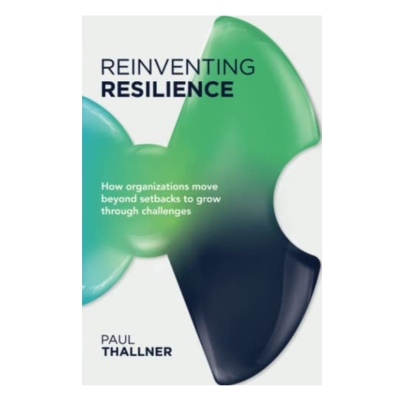
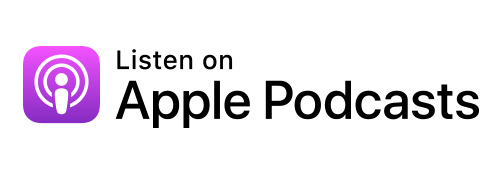

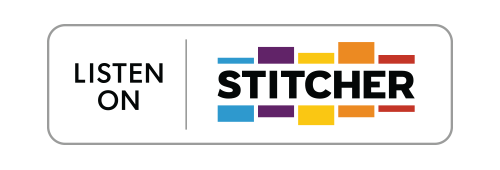


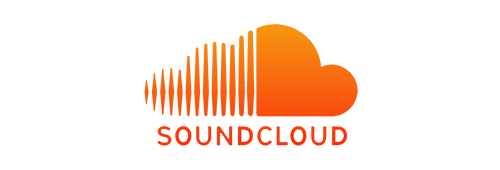

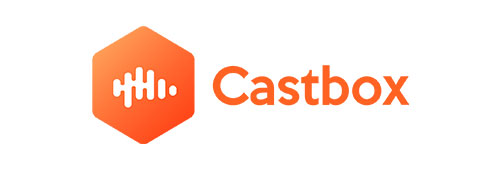
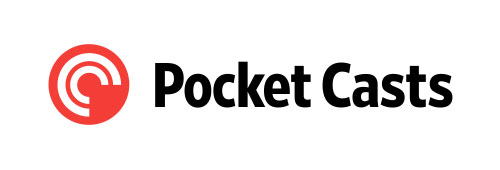
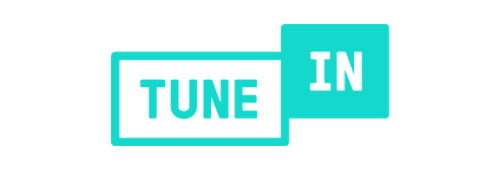
Leave a Reply